Educational institutions, organizations, and multi-purpose facilities face an ongoing challenge: helping visitors, students, alumni, and community members navigate physical spaces while fostering connections within their communities. Building directories serve dual purposes—they guide people to physical locations while simultaneously showcasing the people, programs, and achievements that define institutional identity.
Whether you’re a school administrator planning a new campus directory, a facilities manager updating building navigation, or an alumni coordinator looking to strengthen community connections, this comprehensive guide provides everything you need to create directory systems that serve both practical navigation needs and strategic institutional objectives.
This guide explores directory fundamentals, design principles, digital versus traditional approaches, content strategies, integration with recognition programs, accessibility requirements, and proven best practices from educational institutions that have successfully transformed how people navigate and connect with their communities.
Understanding the Evolving Role of Building Directories
Modern building directories have evolved far beyond simple room number listings into sophisticated tools that serve multiple institutional objectives.
Traditional Directories and Their Limitations

Physical Directory Boards:
For decades, institutions relied on static directory boards mounted in lobbies and hallways. These traditional systems typically featured alphabetical name listings, room number references, and basic organizational structures. While serving fundamental wayfinding purposes, they face significant limitations in today’s dynamic environments.
Common Limitations:
Traditional directories struggle with several inherent challenges that affect both functionality and institutional value. Time-consuming manual updates require specialized staff and often result in outdated information during transition periods. Limited space constraints prevent inclusion of comprehensive information, contextual details, or recognition elements that would enhance community connection.
Physical directories cannot adapt to temporary changes like construction detours, event spaces, or visiting programs without expensive replacement. They offer no search functionality, forcing visitors to scan entire listings manually. Perhaps most significantly, traditional directories serve only wayfinding functions without leveraging directory interactions for recognition, storytelling, or community engagement.
The Expanded Purpose of Modern Directories
Today’s most effective directories serve multiple strategic purposes beyond simple navigation:
Wayfinding and Navigation: The primary function remains helping people find physical destinations efficiently. Clear navigation reduces stress, prevents late arrivals, and creates positive first impressions that influence overall institutional perception.
Community Recognition: Directories provide opportunities to celebrate community members, showcase achievements, and reinforce that individuals matter to institutional identity. Alumni engagement through digital recognition demonstrates how directory integration with recognition programs strengthens emotional connections that drive long-term engagement and support.
Institutional Identity: Directory design, content, and functionality communicate institutional values, professionalism, and priorities. A well-executed directory reinforces brand identity while demonstrating commitment to visitor experience and community celebration.
Information Hub: Beyond navigation, directories can provide event schedules, program information, achievement highlights, and news that keeps community members informed and connected.
Data Collection: Digital directories generate valuable analytics about navigation patterns, common destinations, peak usage times, and information needs that inform facility planning and communication strategies.
Essential Components of Effective Building Directories
Regardless of format or technology, successful directories share fundamental components that ensure functionality and user satisfaction.
Clear Organizational Structure
Logical Grouping and Categorization:
Effective directories organize information in ways that match how users think about destinations. For educational institutions, common organizational approaches include:
- By Building or Wing: Especially important for multi-building campuses where visitors need to first identify which building contains their destination
- By Department or Program: Academic departments, administrative offices, student services, and support functions grouped logically
- By Function: Classrooms, offices, athletic facilities, dining services, and recreational spaces
- By Alphabetical Listing: Supplementary organization enabling quick scanning when users know exact names
The most effective directories often combine multiple organizational approaches, enabling users to find destinations through whichever mental model they bring to the search process.
Hierarchical Information Design:
Information architecture matters tremendously for usability. Present overview information first, allowing progressive disclosure of details as needed. For example, a school directory might show:
- Main campus sections (Academic, Athletic, Administrative, Student Life)
- Specific buildings within each section
- Departments or programs within buildings
- Individual rooms, offices, or faculty members
This hierarchical approach prevents overwhelming users with excessive detail while ensuring comprehensive information remains accessible.
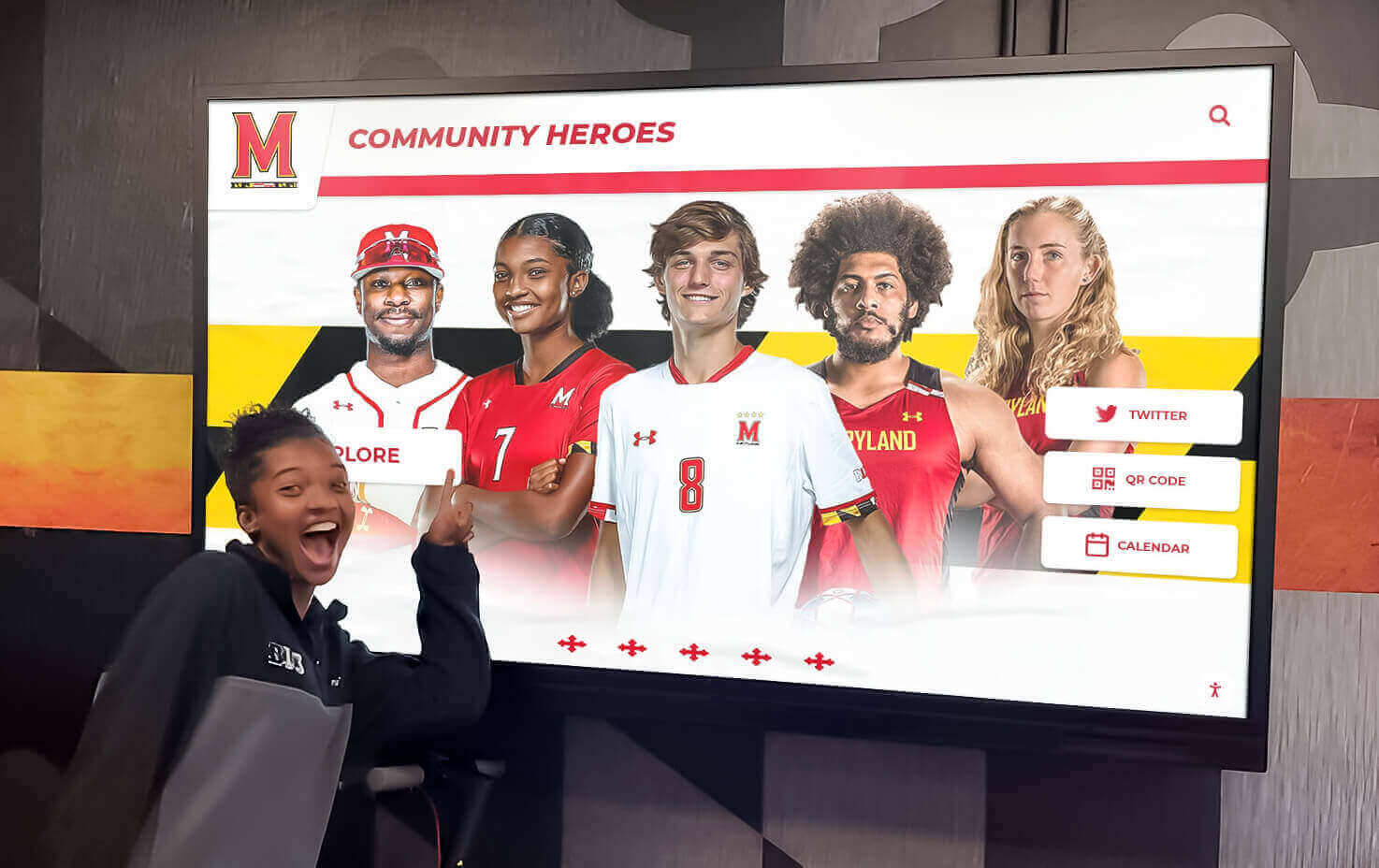
Comprehensive and Accurate Content
Essential Directory Information:
Complete directories include information that addresses diverse user needs:
- Primary Identifiers: Building names, room numbers, suite designations, and addresses
- Occupant Information: Names, titles, departments, and organizational affiliations
- Contact Details: Phone numbers, email addresses, and office hours when appropriate
- Contextual Information: Building amenities, parking locations, accessibility features, and special instructions
- Directional Guidance: Navigation instructions, elevator locations, entrance guidance, and distance estimates
Accuracy and Currency:
Directory value depends entirely on information accuracy. Outdated directories create frustration, waste time, and damage institutional credibility. Establish clear content management processes including:
- Designated responsibility for directory updates assigned to specific staff members
- Regular review cycles ensuring systematic accuracy verification
- Immediate update procedures when changes occur
- Integration with official records systems that automatically reflect changes
- Quality assurance processes preventing errors before publication
Understanding maintenance and troubleshooting approaches ensures directory systems remain accurate and functional over time.
Intuitive Search and Discovery
Multiple Access Methods:
Users approach directories with different information and mental models. Comprehensive systems accommodate various search approaches:
Known-Item Search: When users know exactly what they’re seeking, enable direct search by name, room number, department, or specific identifier. This supports visitors with scheduled appointments or specific destinations.
Exploratory Browsing: Some users need to discover appropriate destinations through exploration. Category browsing, organizational charts, and visual maps support exploratory navigation when users know what they need (“financial aid office”) without knowing specific names or locations.
Recommended Destinations: First-time visitors often don’t know exactly what they’re seeking. Highlighting common destinations, visitor services, and frequently accessed locations helps orient newcomers quickly.
Visual Navigation: Many people understand spatial relationships better than abstract text listings. Maps, floor plans, and visual building representations enable geographic understanding that complements text-based directories.
Clear Visual Design and Wayfinding
Design Principles for Directory Effectiveness:
Visual design dramatically impacts directory usability. Effective directories employ design principles that enhance comprehension and reduce cognitive load:
Visual Hierarchy: Use typography, color, and spacing to indicate information importance and relationships. Primary destinations should visually dominate, with supporting details clearly subordinate.
Consistent Formatting: Maintain consistent presentation patterns throughout the directory so users develop expectations about where specific information appears.
Adequate Contrast: Ensure sufficient contrast between text and backgrounds for readability under varied lighting conditions and for users with visual limitations.
Strategic Color Usage: Use color to encode information (department categories, building zones, organizational divisions) while ensuring color-blind accessibility through redundant cues.
Clear Typography: Select legible fonts at appropriate sizes. Sans-serif typefaces typically work better for directional signage than decorative alternatives.
Whitespace and Layout: Avoid visual clutter through adequate spacing between elements. Crowded directories overwhelm users and obscure important information.

Digital vs. Traditional Directory Approaches
Organizations face fundamental choices between traditional physical directories, digital interactive systems, or hybrid approaches combining both.
Traditional Physical Directory Advantages
Simplicity and Reliability:
Physical directories require no power, suffer no technical failures, and function without internet connectivity or software updates. This simplicity provides reliability that matters in mission-critical wayfinding applications.
Zero Learning Curve:
Everyone understands how to read lists and maps without instruction. There’s no interface to learn, no touchscreen to navigate, and no technology barrier potentially excluding less tech-savvy users.
Lower Initial Investment:
Basic physical directories cost significantly less than digital alternatives for initial installation, particularly for small facilities with modest directory needs.
Appropriate for Specific Contexts:
Some environments—small schools, historic buildings, outdoor spaces, or locations without reliable power—remain better served by traditional approaches than digital alternatives.
Digital Directory Advantages
Dynamic Content Management:
Digital directories enable instant updates across all displays when people relocate, organizational structures change, or temporary modifications occur. Cloud-based content management systems allow authorized staff to update information from anywhere without physical access to directory locations.
Enhanced Search and Navigation:
Touchscreen building directories provide intelligent search functionality, turn-by-turn navigation instructions, and interactive maps that dramatically improve wayfinding effectiveness compared to static listings.
Recognition and Storytelling Integration:
Digital platforms enable seamless integration of directory functionality with recognition programs that celebrate achievements, showcase community members, and strengthen institutional identity. A directory search for a faculty member might reveal not just office location but also achievements, publications, awards, and biographical information that reinforces institutional pride.
Multilingual Support:
Digital directories instantly translate content into multiple languages, serving diverse populations without multilingual reception staff or duplicate physical signage.
Analytics and Optimization:
Usage tracking reveals which destinations people seek most frequently, identifies confusing areas requiring improved signage, and provides insights for facility planning and communication strategies.
Comprehensive Information:
Digital platforms accommodate extensive information—business hours, contact details, photos, videos, links to websites, and contextual guidance—without the space constraints limiting physical directories.
Cost-Effective Updates:
While initial investment exceeds traditional directories, digital systems dramatically reduce long-term costs through elimination of physical signage replacement, reduced staff time for manual updates, and operational efficiencies.
Hybrid Approaches Combining Both
Many institutions find optimal solutions combine digital and traditional elements, leveraging advantages of each:
Primary Digital with Physical Backup: Deploy digital directories at high-traffic locations while maintaining simple physical directories as backup and for areas where technology proves impractical.
Physical Overview with Digital Detail: Use traditional directories for building-level orientation while providing digital kiosks for detailed information, search functionality, and interactive navigation.
Print-on-Demand Supplements: Generate printed directory materials from digital databases for events, orientations, or distribution while maintaining digital systems as primary solutions.
QR Code Integration: Enhance physical directories with QR codes linking to digital resources, mobile wayfinding, detailed information, or recognition content.
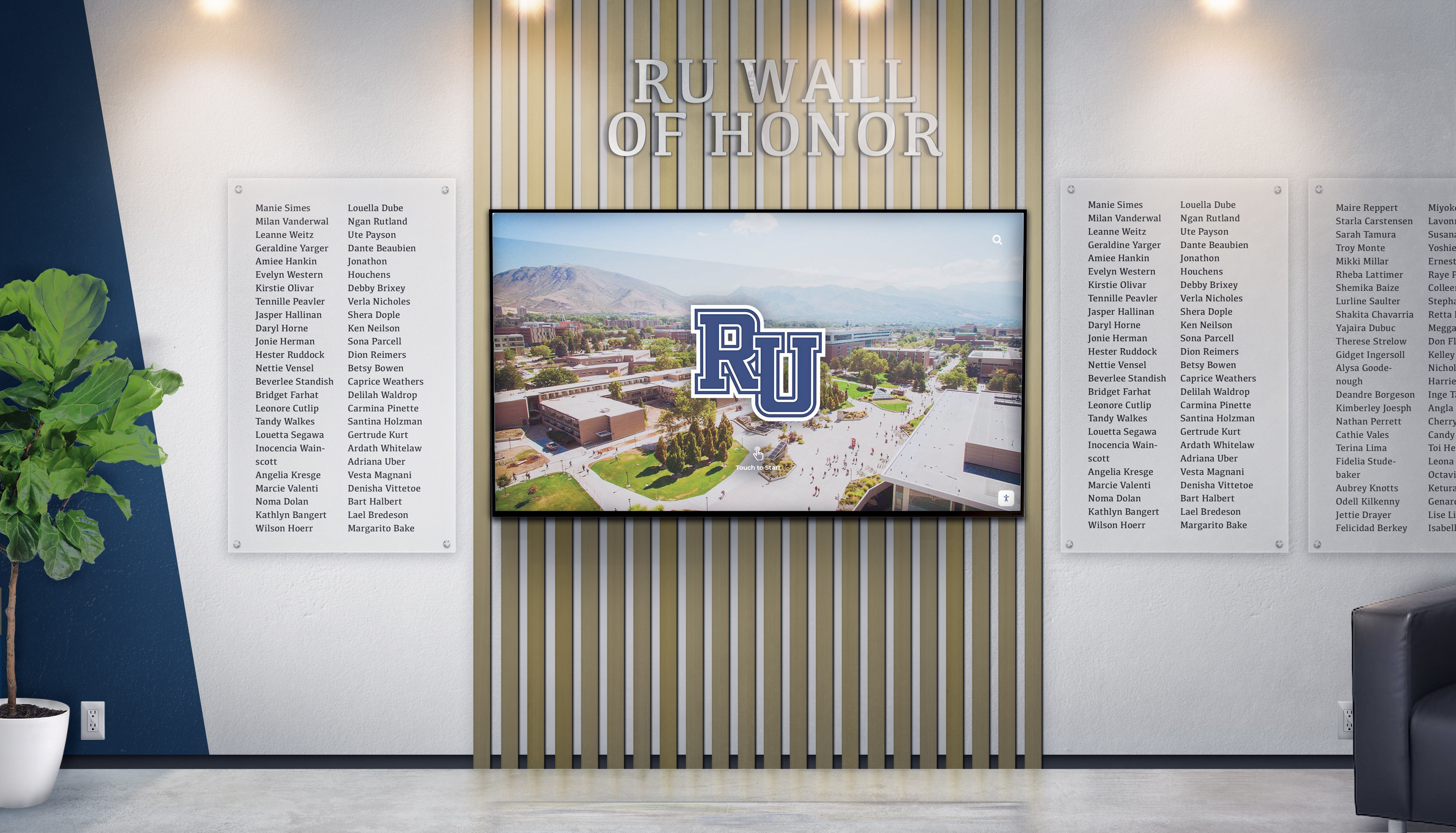
Directory Solutions for Educational Institutions
Educational environments present unique directory challenges and opportunities that differ from corporate or municipal buildings.
School and University Campus Directories
Multi-Building Campus Navigation:
Educational campuses often span multiple buildings, outdoor spaces, and complex layouts that challenge visitors unfamiliar with campus geography. Effective campus directories address this complexity through:
Campus-Level Overview: Master directories located at main entrances provide overall campus orientation, building identification, parking guidance, and primary destination highlights.
Building-Specific Detail: Individual building directories focus on that structure’s layout, department locations, classroom numbers, and facility locations.
Wayfinding Continuity: Consistent directory design, terminology, and navigation guidance across campus creates coherent wayfinding experiences rather than disjointed systems in each building.
Outdoor Navigation Support: Consider how directories guide users between buildings through outdoor spaces, particularly on large campuses where multiple decisions occur between arrival and destination.
Academic Department Showcasing:
Campus directories provide opportunities to highlight academic programs, faculty achievements, and departmental identity beyond simple room number listings. This recognition reinforces institutional pride while helping prospective students, visitors, and community members understand academic strengths.
Digital school tours integrated with directory systems create immersive experiences that combine navigation with institutional storytelling and recognition.
Student Services Integration:
Students frequently need to access support services—advising, financial aid, health services, counseling, and academic support. Directories that prominently feature these services with clear navigation help students access help when needed, supporting student success and satisfaction.
Athletics and Extracurricular Facilities:
Schools with extensive athletic facilities, performing arts spaces, or specialized buildings benefit from directories that guide visitors to games, performances, and events while celebrating team achievements and program accomplishments.
Alumni and Community Directories
Beyond Physical Wayfinding:
Alumni directories serve fundamentally different purposes than building navigation systems, focusing on community connection and networking rather than physical space orientation.
Interactive alumni directories enable graduates to find classmates, discover mentors, identify professional connections, and maintain ties with institutional communities. These directories typically include:
- Professional Information: Current employer, position, industry, and location
- Contact Preferences: Email, phone, social media, and communication permissions
- Biography and Interests: Background information and personal interests
- Networking Availability: Willingness to mentor students, conduct informational interviews, or support career development
- Class Year and Affiliations: Graduation year, degree program, extracurricular participation, and special recognitions
Privacy and Permission Management:
Alumni directories require careful attention to privacy preferences, allowing individuals to control what information appears publicly while enabling meaningful connections. Best practices include opt-in participation, granular privacy controls, and regular consent verification.
Recognition Integration:
The most effective alumni directories integrate seamlessly with recognition programs, enabling users who search for alumni to discover not just contact information but also achievements, awards, career accomplishments, and contributions to institutional communities.

Athletic and Recognition Directories
Celebration Alongside Navigation:
Athletic facilities provide unique opportunities to combine wayfinding with achievement recognition. Directories in gymnasiums, field houses, and athletic complexes can guide visitors to specific venues while showcasing:
- Record Holders: Digital record boards celebrating athletic achievements
- Championship Teams: Recognition of successful seasons and tournament victories
- Individual Honors: All-state athletes, scholarship recipients, and award winners
- Coaching Excellence: Celebration of coaching contributions and program building
- Alumni Athletes: Professional athletes, collegiate competitors, and continued athletic excellence
This integration transforms functional wayfinding tools into sources of institutional pride that inspire current students while honoring past achievements.
Content Strategy for Effective Directories
Beyond technical implementation, directory effectiveness depends on thoughtful content strategy that serves diverse user needs.
Identifying Core User Groups and Needs
User Research and Analysis:
Different directory users have different information needs, technical comfort levels, and contextual understanding. Effective content strategy begins with understanding who uses directories and what they’re trying to accomplish:
First-Time Visitors: New visitors lack familiarity with building layouts, organizational structures, and institutional terminology. They need clear orientation, prominent highlighting of common destinations, and navigation support that assumes no prior knowledge.
Regular Users: Students, staff, and regular visitors already understand basic layouts but need quick reference for specific locations, office hours, contact information, and temporary changes.
Parents and Families: Family members visiting for events, meetings, or campus tours need accessible guidance that doesn’t assume institutional knowledge or extensive campus familiarity.
Alumni and Community Members: Returning alumni and community visitors bring past experience that may be outdated. They appreciate recognition of historical spaces alongside current information about changes and new facilities.
Delivery and Service Personnel: Vendors, delivery services, and maintenance personnel need pragmatic navigation focused on efficient access to specific locations, loading docks, and service entrances.
Emergency Responders: First responders require clear building identification, floor plans, emergency access points, and hazard information that supports rapid response.
Writing Clear, Accessible Directory Content
Plain Language Principles:
Directory content must be immediately understandable to people unfamiliar with institutional jargon, acronyms, or insider terminology. Apply plain language principles:
Use Common Terms: Prefer “Financial Aid Office” over “Office of Student Financial Services Administration.” Use language that reflects how people actually describe destinations in conversation.
Expand Acronyms: While abbreviations save space, they confuse unfamiliar users. Include both full names and common acronyms: “Financial Aid (FA) Office.”
Provide Alternative Names: People know the same destination by different terms. Include variations: “Dining Hall / Cafeteria / Student Center.”
Add Contextual Information: Brief descriptions help users confirm correct destinations: “Financial Aid Office - Apply for scholarships, grants, and student loans.”
Active, Direct Instructions: Use direct guidance: “Turn left at the elevator” rather than passive constructions: “The elevator will be encountered on the left.”
Maintaining Directory Accuracy Over Time
Sustainable Content Management:
Directory value erodes rapidly when information becomes outdated. Sustainable directory programs establish clear processes preventing accuracy deterioration:
Designated Responsibility: Assign specific staff members responsibility for directory accuracy with sufficient time allocation and authority to maintain current information.
Regular Review Cycles: Schedule systematic reviews—monthly for high-change areas, quarterly for stable information—ensuring proactive accuracy verification rather than reactive correction after errors are discovered.
Change Notification Integration: Connect directory management with official processes that generate changes. When HR processes employee terminations, facilities management space reallocations, or registrar course scheduling, trigger automatic directory review.
Quality Assurance Procedures: Implement review workflows preventing publication of unverified changes, particularly for high-visibility information or complex updates affecting multiple directory locations.
User Feedback Mechanisms: Enable directory users to report errors, suggest improvements, or request additions through simple reporting processes. Monitor and respond to feedback systematically.
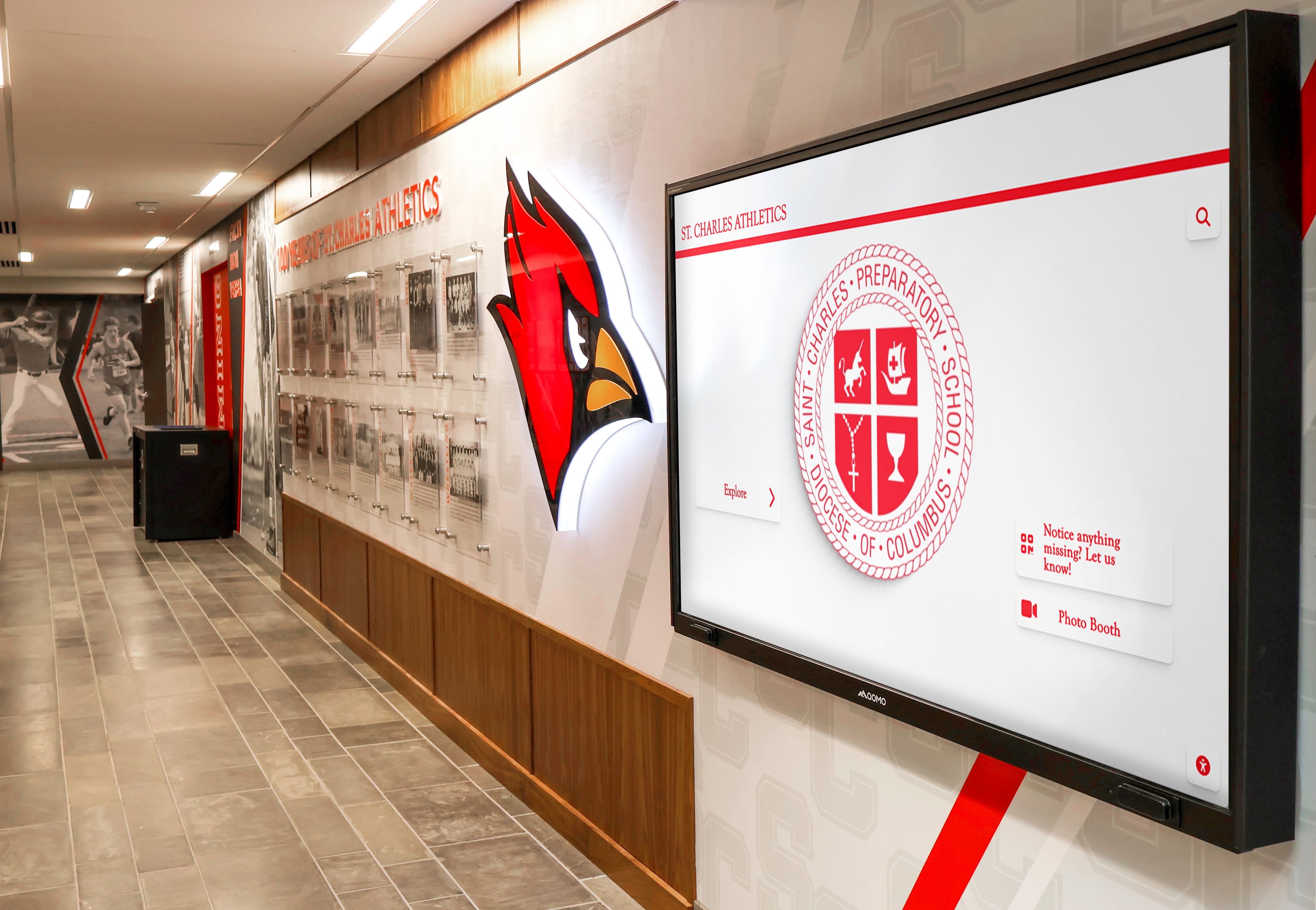
Accessibility and Inclusive Design
Effective directories serve all users regardless of abilities, accommodating diverse needs through thoughtful inclusive design.
Physical Accessibility Requirements
ADA Compliance for Building Directories:
The Americans with Disabilities Act (ADA) establishes legal requirements for accessible directory design that all institutions must meet:
Height and Reach Standards:
- Maximum reach height of 48 inches for highest interactive elements or information
- Clear floor space of 30 x 48 inches for wheelchair approach
- Minimum 27-inch knee clearance for forward wheelchair approach
- Protruding objects limited to 4 inches from walls above 27 inches
Tactile and Braille Information: Permanent room signage must include raised characters and Braille. While full directories don’t require complete Braille translation, high-priority information should accommodate tactile reading.
Contrast and Visual Design:
- Minimum 70% contrast between characters and backgrounds
- Non-glare finishes preventing reflective interference
- Consistent character height and style enhancing readability
Digital Accessibility Standards
WCAG Compliance:
Digital directories must follow Web Content Accessibility Guidelines (WCAG) 2.1 Level AA standards ensuring equitable access:
Perceivable Information:
- Sufficient color contrast (4.5:1 minimum for text)
- Text alternatives for non-text content
- Captions and transcripts for audio content
- Content adaptable to different presentations without losing information
Operable Interfaces:
- Full keyboard accessibility without requiring mouse
- Adequate time for interaction with adjustable timeouts
- Clear focus indicators showing current position
- Multiple ways to access content
Understandable Content:
- Readable text at appropriate literacy levels
- Predictable navigation and functionality
- Input assistance and error prevention
- Clear error messages with correction suggestions
Robust Compatibility:
- Compatible with assistive technologies
- Valid HTML and accessibility APIs
- Future-compatible as technologies evolve
Understanding digital wall accessibility requirements ensures directory implementations serve all users effectively.
Multilingual Support
Serving Diverse Populations:
Many institutions serve communities speaking multiple languages. Comprehensive directory systems should provide:
Multiple Language Options: Offer 5-10 language choices reflecting local demographic diversity. Common options include English, Spanish, Chinese, Vietnamese, Arabic, and regional languages based on specific community composition.
Complete Translation: Translate all directory content, not just names and room numbers. Navigation instructions, category labels, and help text all require translation for true accessibility.
Cultural Adaptation: Consider cultural differences in how people understand navigation, organizational hierarchies, and spatial relationships. Direct translation may not convey equivalent meaning without cultural adaptation.
Language Selection Prominence: Make language selection immediately obvious and accessible from all directory screens, not buried in settings or secondary menus.
Integration with Recognition and Engagement Programs
The most strategically valuable directories integrate wayfinding functionality with institutional priorities around recognition, community building, and engagement.
Connecting Physical and Digital Spaces
Recognition as Directory Content:
Rather than treating directories and recognition as separate systems, integrated approaches embed recognition within directory functionality. When users search for department chairs, faculty members, or program directors, directories can display not just locations but also:
- Career achievements and professional accomplishments
- Awards, honors, and recognitions received
- Educational background and expertise areas
- Publications, research, or creative works
- Length of service and institutional contributions
- Personal interests and community involvement
This integration ensures recognition reaches audiences actively seeking information rather than requiring separate recognition destination visits.
Best practices for connecting with alumni emphasize that recognition integrated with practical tools generates higher engagement than standalone recognition programs requiring special visits.
Athletic Achievement Integration
Record Boards and Directories:
Athletic directories that guide visitors to gyms, fields, and sporting facilities provide perfect contexts for achievement recognition. Digital record board solutions can be integrated directly into directory systems, allowing users to:
- Navigate to specific athletic facilities
- View records for sports played in those venues
- Discover championship history and team achievements
- Find coach biographies and accomplishments
- Access athlete recognition and hall of fame information
This integration serves practical wayfinding needs while celebrating athletic excellence, creating emotional connection and institutional pride.
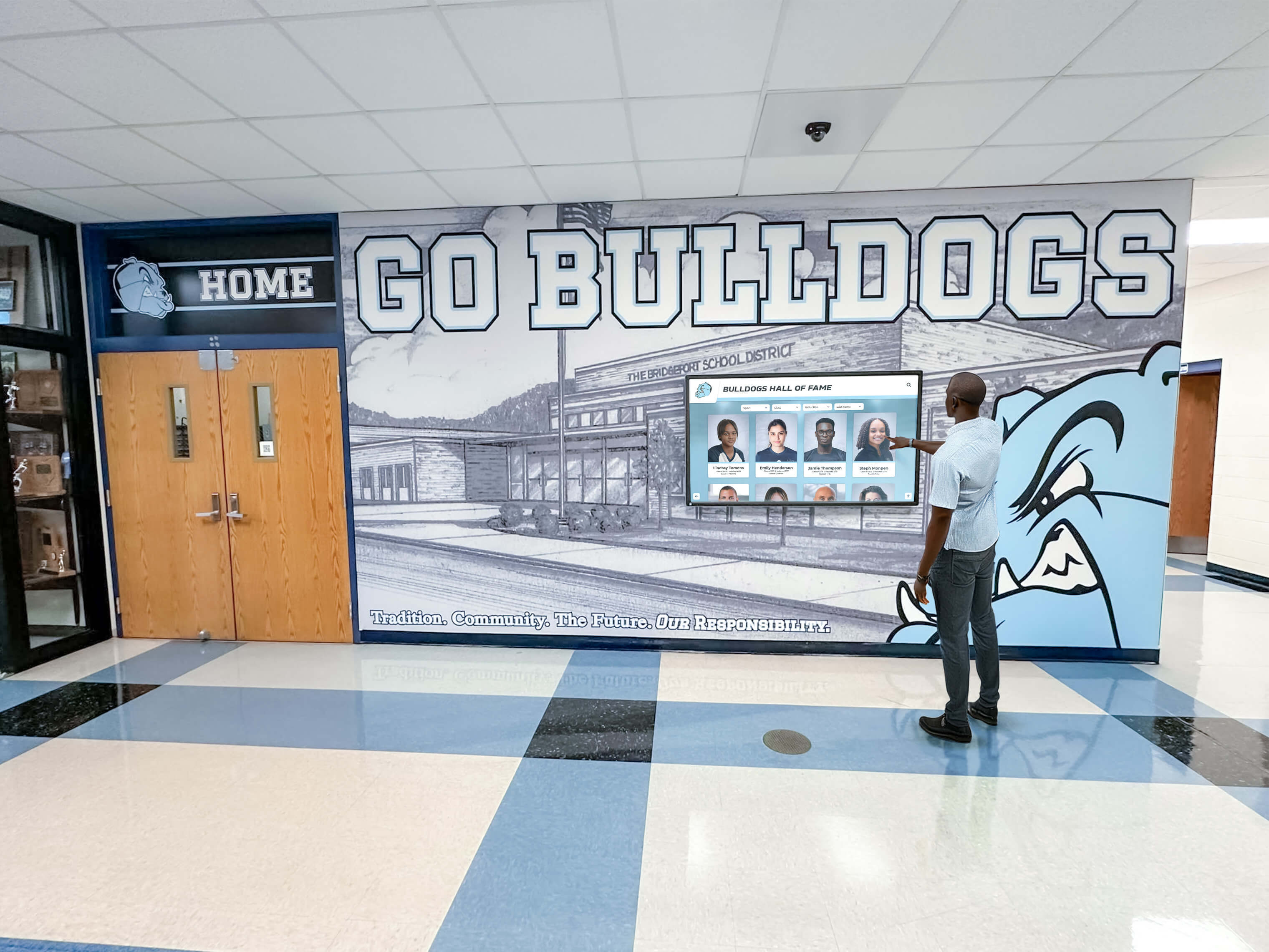
Staff and Faculty Recognition
Beyond Contact Information:
Faculty and staff directories provide opportunities to celebrate educational excellence, dedicated service, and professional accomplishments. Rather than limiting entries to name, title, office, and phone number, comprehensive directories can include:
Professional Achievements:
- Academic degrees and certifications
- Publications, research, and scholarly contributions
- Professional association leadership and awards
- Teaching excellence recognition
- Years of service milestones
Personal Connections:
- Brief biography creating personal connection
- Educational philosophy or approach
- Hobbies and interests outside profession
- Previous experience and background
- Languages spoken and special skills
Engagement Opportunities:
- Office hours and appointment scheduling
- Current research or projects
- Courses taught and descriptions
- Student organization advising
- Links to faculty websites or portfolios
This comprehensive approach transforms directories from reference tools into engagement platforms that help students, families, and visitors appreciate the talented people serving institutional missions.
Technology Platforms for Digital Directories
Organizations implementing digital directories face numerous technology choices affecting functionality, cost, and long-term success.
Content Management Systems
Essential CMS Capabilities:
Effective digital directory content management systems enable non-technical staff to maintain accurate information without requiring IT involvement for routine updates. Essential capabilities include:
Intuitive Administration: Web-based interfaces accessible from any internet-connected device using familiar concepts rather than specialized technical knowledge. Drag-and-drop functionality, visual editors, and straightforward workflows enable efficient management.
User Permission Management: Granular permission controls allowing different staff members appropriate access. Facilities staff might update room numbers while HR manages personnel information, with permissions preventing inappropriate modifications.
Bulk Operations: Import and export capabilities enabling efficient large-scale updates rather than requiring tedious individual record editing.
Version History and Rollback: Change tracking showing who modified what information and when, with ability to restore previous versions if errors occur.
Scheduled Publishing: Ability to prepare content changes in advance with automatic publication at specified times, supporting planned organizational changes.
Multi-Location Management: Centralized control of directories across multiple buildings or campuses while enabling location-specific customization.
Understanding touchscreen kiosk software selection criteria helps organizations evaluate platform capabilities systematically.
Integration Capabilities
Connecting with Existing Systems:
Maximum directory value comes from integration with institutional systems that already contain accurate information, eliminating duplicate data entry and preventing synchronization errors:
Student Information Systems:
- Course schedules and classroom locations
- Faculty teaching assignments
- Department organizational structures
- Academic program information
Human Resources Systems:
- Employee names, titles, and department assignments
- Office locations and contact information
- Hire dates and service milestones
- Organizational charts and reporting structures
Facility Management Systems:
- Room numbers and space classifications
- Building maintenance schedules affecting access
- Space utilization and assignment tracking
- Floor plans and architectural drawings
Event Management Systems:
- Event locations and schedules
- Room reservations and availability
- Special event programming
- Temporary location changes
Access Control and Security:
- Building access hours and procedures
- Visitor management and check-in
- Emergency notification integration
- Security camera and monitoring systems
Mobile and Responsive Design
Multi-Device Access:
Directory users increasingly expect mobile access, using smartphones to navigate while moving through spaces rather than returning to fixed kiosks for each decision. Comprehensive directory solutions should provide:
Responsive Web Design: Directory interfaces that automatically adapt to various screen sizes—desktop displays at kiosks, tablets carried by staff, and smartphones used by visitors.
Native Mobile Applications: Dedicated iOS and Android apps providing optimized mobile experiences with offline functionality, GPS integration, and push notifications for campus alerts.
QR Code Integration: Physical signage enhanced with QR codes linking to detailed digital information, navigation instructions, or recognition content accessible via personal devices.
Augmented Reality Navigation: Advanced mobile experiences overlaying directional arrows on camera views, highlighting landmarks, and providing immersive wayfinding that feels natural and intuitive.
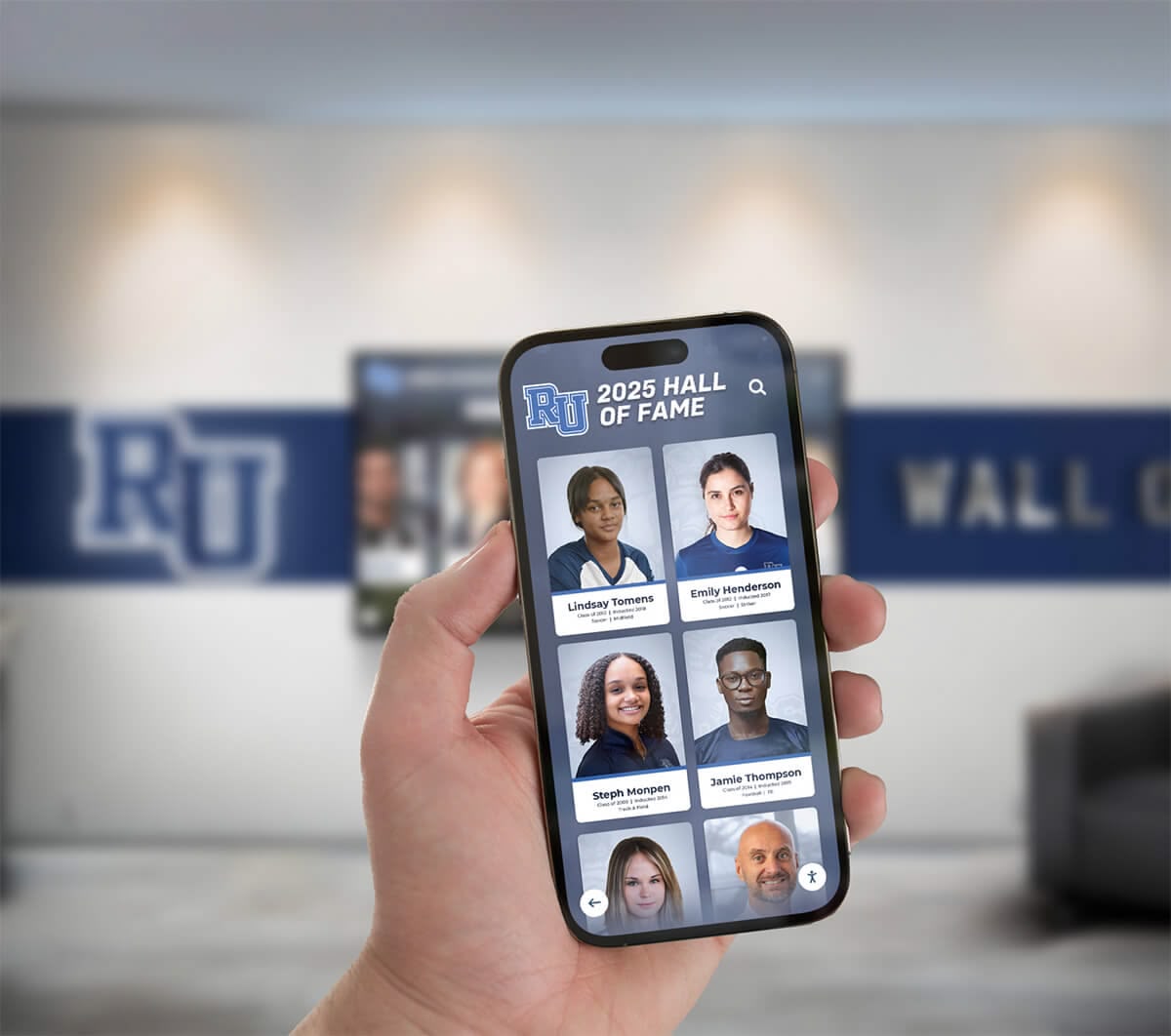
Measuring Directory Effectiveness
Data-driven approaches enable continuous improvement based on actual usage patterns and user feedback rather than assumptions about directory performance.
Key Performance Indicators
Usage Metrics:
Track quantitative measures revealing how people interact with directory systems:
- Interaction Volume: Total directory uses per day, week, and month
- Search Queries: Most common searches revealing popular destinations
- Failed Searches: Queries returning no results indicating content gaps
- Session Duration: Average interaction time suggesting ease of use
- Language Selection: Distribution of language choices informing translation priorities
- Peak Usage Times: Temporal patterns guiding resource allocation
Wayfinding Success Rates:
Measure whether directories help users successfully find destinations:
- Search Success Percentage: Proportion of searches yielding clear results
- Navigation Completion: Users who follow navigation instructions to destinations
- Repeat Searches: Multiple searches for same destination suggesting initial failure
- Help Requests: Reduction in staff-assisted wayfinding after directory implementation
- User Satisfaction: Survey data about directory helpfulness
Operational Efficiency:
Quantify organizational benefits from directory implementation:
- Staff Time Savings: Reduction in time spent providing directions
- Content Update Efficiency: Time required for directory maintenance
- Signage Cost Reduction: Decreased physical signage expenses
- Visitor Experience Improvement: Satisfaction scores and feedback
- Recognition Program Reach: Engagement with recognition content
Continuous Improvement Process
Data-Informed Optimization:
Use metrics systematically to identify improvement opportunities:
Content Refinement: Failed search analysis reveals missing information, unclear terminology, or content gaps. Address these systematically by adding synonyms, expanding categorization, or including previously omitted information.
Interface Improvements: Session duration and interaction patterns indicate interface problems. If users take excessive time completing simple tasks, simplify navigation, improve visual hierarchy, or clarify instructions.
Wayfinding Enhancement: User feedback and observation reveal navigation difficulties. Update maps, clarify instructions, add landmarks, or install supplementary signage addressing common confusion points.
Technology Upgrades: Plan systematic technology refresh cycles ensuring directories remain current with user expectations. Hardware refresh every 5-7 years, software platform updates annually, and continuous feature enhancement maintain competitive directory experiences.
Cost Considerations and ROI Analysis
Organizations evaluating directory implementations need realistic understanding of costs and expected returns on investment.
Implementation Investment
Initial Costs for Digital Directories:
Comprehensive digital directory implementations typically involve:
Hardware Infrastructure:
- Digital displays and touchscreen kiosks: $5,000-$20,000 each depending on size and features
- Media players and computing modules: Included in many kiosk packages or $500-$2,000 separately
- Network infrastructure: $2,000-$10,000 for connectivity and data cabling
- Installation and mounting: $1,000-$5,000 per location for professional installation
Software and Content:
- Directory platform licensing: $3,000-$15,000 annually based on organization size
- Custom content development: $5,000-$20,000 for initial data compilation and mapping
- System integration: $5,000-$20,000 connecting with existing institutional systems
- Design and branding: $3,000-$10,000 for custom visual design
Implementation Services:
- Project management and planning: $5,000-$15,000
- Content strategy and information architecture: $5,000-$10,000
- User testing and refinement: $3,000-$8,000
- Training and documentation: $2,000-$5,000
Total Investment Range:
Small single-building implementations: $50,000-$100,000 Medium multi-location deployments: $100,000-$250,000 Large campus-wide systems: $250,000-$500,000+
Ongoing Operational Costs
Annual Expenses:
Budget for recurring costs including:
- Software licensing and support: $5,000-$20,000 annually
- Content management labor: $10,000-$30,000 annually (10-20 hours monthly)
- Hardware maintenance and replacement reserve: $3,000-$10,000 annually
- Network and hosting: $2,000-$5,000 annually
- System updates and enhancements: $5,000-$15,000 annually
Return on Investment
Quantifiable Benefits:
Organizations typically justify directory investments through multiple value streams:
Staff Time Savings: Reception and facilities staff at institutions with directory systems report 20-40% reduction in time spent providing directions, equivalent to $15,000-$40,000 annually in reclaimed staff capacity.
Signage Cost Reduction: Digital directories reduce physical signage expenses by $5,000-$15,000 annually through elimination of replacement costs when spaces change.
Enhanced Recognition Programs: Integrated recognition capabilities typically increase alumni engagement and giving by 15-30% among recognized individuals, with quantifiable fundraising impact.
Improved Visitor Experience: While difficult to quantify precisely, enhanced first impressions and reduced navigation stress contribute to recruitment yield, event attendance, and overall satisfaction.
Operational Efficiency: Better space utilization, improved communication, and data-driven facility planning generate ongoing operational value.
Typical ROI Timeline:
Most educational institutions achieve 2-4 year return on digital directory investments, with ongoing benefits throughout 7-10 year hardware lifecycles and indefinite software platform benefits.
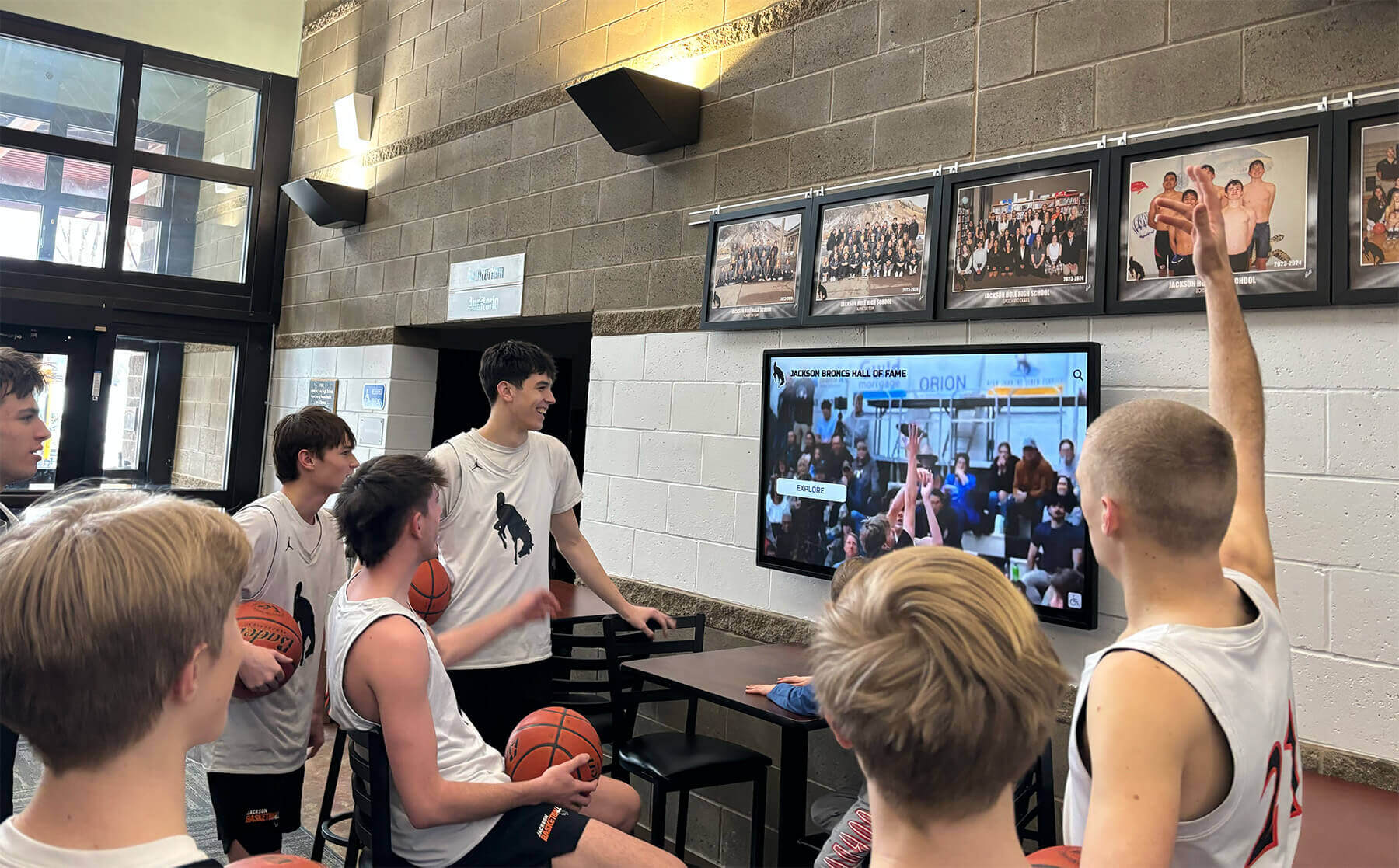
Implementation Best Practices
Successful directory projects follow systematic approaches that engage stakeholders, prioritize user needs, and plan for long-term sustainability.
Planning and Requirements Gathering
Stakeholder Engagement:
Include diverse perspectives in planning:
- Facilities Management: Building layouts, space assignments, maintenance schedules
- Admissions and Visitor Services: First-time visitor needs and common questions
- IT Services: Technical infrastructure and system integration
- Marketing and Communications: Brand standards and messaging
- Alumni Relations: Community engagement and recognition priorities
- Accessibility Services: ADA compliance and inclusive design
- Security and Safety: Emergency communication and access control
User Research:
Understand actual user needs through systematic research:
- Visitor Shadowing: Observe first-time visitors navigating without assistance, identifying confusion points and decision-making needs
- Staff Interviews: Talk with reception, security, and facilities staff about most common directional questions
- User Surveys: Collect systematic feedback from students, staff, visitors, and alumni about navigation challenges
- Usage Analysis: Review existing directory analytics if available, identifying most-searched destinations and failed queries
Pilot Testing and Iteration
Phased Implementation Approach:
Rather than building-wide deployment, successful projects typically begin with pilot installations:
Pilot Site Selection: Choose 2-3 high-visibility, high-traffic locations representing diverse use cases. Main entrance lobbies, student service centers, and athletic facilities provide varied contexts for evaluation.
Pilot Duration: Operate pilot systems for 4-8 weeks, allowing sufficient time for diverse users to encounter and evaluate directories while providing feedback.
Systematic Evaluation: Collect usage analytics, conduct user observations, administer surveys, interview staff, and document technical issues during pilot periods.
Refinement Before Expansion: Use pilot insights to refine content, navigation, interface design, and functionality before broader deployment. Address identified issues prevents multiplication of problems across multiple locations.
Training and Change Management
Staff Preparation:
Ensure staff understand directory capabilities and can assist users:
- Operations Training: How to perform basic troubleshooting and content updates
- User Assistance: How to help visitors use directories effectively
- Escalation Procedures: When and how to contact technical support
- Content Management: Processes for submitting update requests
User Education:
Help community members discover and effectively use directories:
- Launch Communications: Announce directory availability through email, social media, website, and campus publications
- Signage: Install clear directional signage pointing to directory locations
- Demonstrations: Staff directories during initial weeks, proactively offering assistance
- Documentation: Create quick-start guides and video tutorials
- Orientation Integration: Include directory information in student, employee, and visitor orientations
Future Trends in Directory Technology
Understanding emerging trends helps organizations plan implementations that remain valuable as technology evolves.
Artificial Intelligence and Personalization
AI-Enhanced Wayfinding:
Machine learning algorithms will increasingly optimize directory functionality:
- Natural Language Understanding: Conversational search understanding intent from casual queries
- Predictive Suggestions: Anticipating likely destinations based on time, location, and user context
- Adaptive Navigation: Automatically adjusting routes based on real-time conditions, accessibility needs, and user preferences
- Learning Systems: Continuously improving through usage pattern analysis
Personalized Experiences:
Directories will increasingly customize content for individual users:
- Recognized User Preferences: Remembering language, accessibility settings, and favorite destinations
- Appointment Integration: Automatically providing navigation to scheduled meeting locations
- Contextual Information: Displaying relevant content based on user role, time, and location
- Recommendation Engines: Suggesting relevant programs, services, or recognition content
Augmented Reality Navigation
AR Wayfinding Experiences:
Smartphone augmented reality will transform how people navigate physical spaces:
- Visual Overlays: Directional arrows superimposed on camera views
- Landmark Highlighting: Visual emphasis of key navigation decision points
- Destination Visualization: Preview of destinations before arrival
- Historical Overlays: Showing how spaces looked previously or recognizing historical significance
Voice and Gesture Interfaces
Touchless Interaction:
Voice and gesture control will supplement or replace touch interfaces:
- Voice-Activated Search: Speaking destinations rather than typing
- Audio Navigation: Turn-by-turn audio guidance like GPS systems
- Gesture Control: Air gestures operating interfaces without surface contact
- Accessibility Benefits: Enhanced options for users unable to use touch interfaces

Conclusion: Building Directories That Serve and Celebrate Communities
Effective building directories have evolved far beyond simple wayfinding tools into strategic platforms that guide visitors, recognize achievements, strengthen community connections, and reinforce institutional identity. Whether implementing traditional physical directories or comprehensive digital systems, success requires understanding user needs, maintaining accurate content, designing accessible interfaces, and integrating directories with broader institutional priorities around recognition and engagement.
Critical Success Factors:
- User-centered design based on actual navigation needs and usage patterns
- Accurate, comprehensive content maintained through sustainable processes
- Accessible design serving all users regardless of abilities
- Integration with recognition programs that celebrate community members
- Appropriate technology choices matching organizational capabilities
- Systematic measurement enabling continuous improvement
- Long-term commitment to maintenance and evolution
Educational institutions that thoughtfully implement directory systems consistently achieve measurable improvements in visitor satisfaction, operational efficiency, and community engagement. The modest investment required for effective directories generates returns through enhanced reputation, stronger emotional connections, and operational benefits that compound over time.
As technology continues advancing, directory capabilities will expand through artificial intelligence, augmented reality, voice interaction, and personalization. Organizations implementing comprehensive directory solutions today position themselves to leverage these innovations, continuously improving navigation and recognition experiences that serve institutional missions for decades to come.
Ready to transform your institution’s directory and recognition systems? Explore how solutions like Rocket Alumni Solutions help schools, universities, and organizations strengthen community connections through interactive displays, comprehensive recognition systems, and engagement platforms designed specifically for educational institutions. Great directories don’t just help people find rooms—they help communities find connection, pride, and shared identity.



































